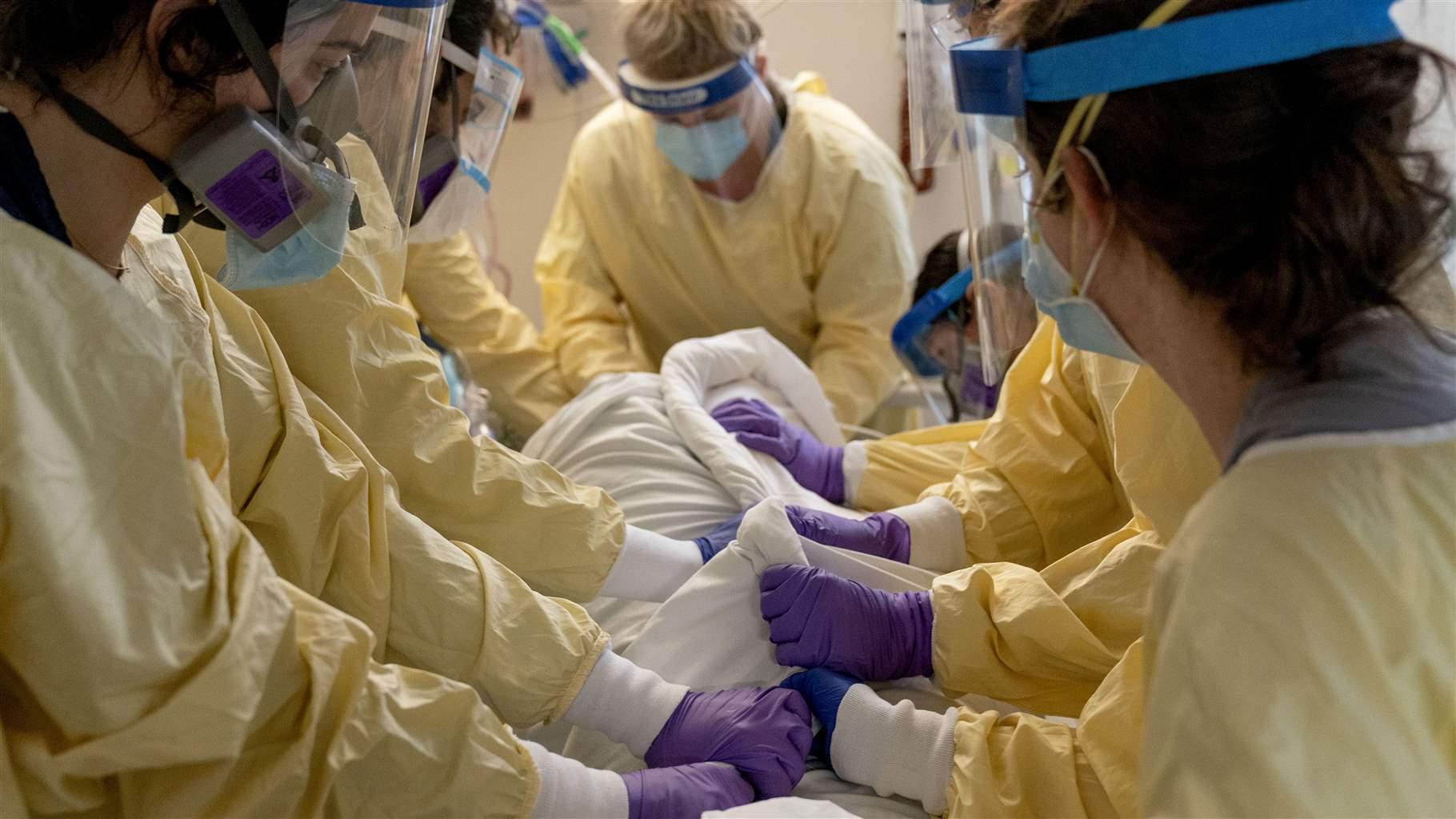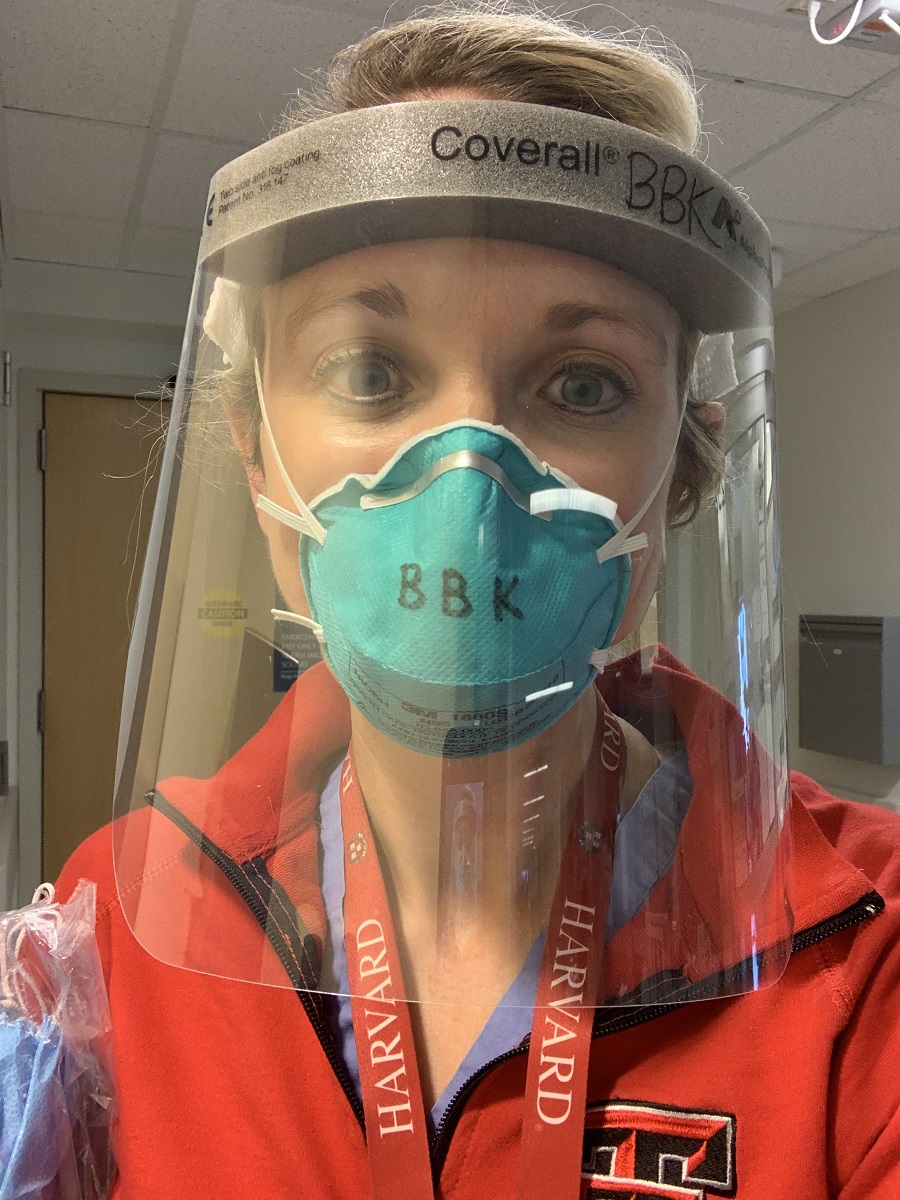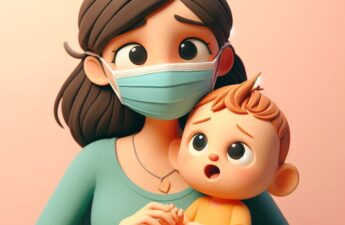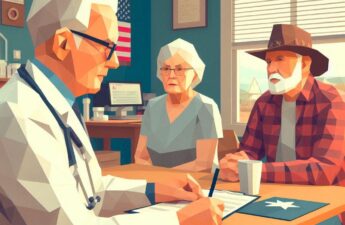
By Christine Vestal, Stateline
Brittany Bankhead-Kendall, 34, was a newly minted surgeon when the COVID-19 pandemic began. At first, like thousands of other health care professionals, she worked tirelessly in crisis mode.
But by last fall, she was experiencing random and repeated physiological symptoms, including a racing heart and dimmed vision. She diagnosed herself as suffering from post-traumatic stress disorder.
The worst of the pandemic may be behind the country. But for frontline health workers such as Bankhead-Kendall, the psychological scars from the chaos and uncertainty they’ve lived through, and the suffering and death they’ve witnessed, may take much longer to heal.
Health care workers across the country say they feel underappreciated by their employers and disillusioned with the medical profession, according to ongoing research at the University of Washington in Seattle.
More than half of the 300-plus doctors, nurses and other frontline health workers who participated in the study said the pandemic has decreased the likelihood they will remain in their profession.
Nationwide, psychiatrists who specialize in trauma-related mental conditions say they’re seeing increasing numbers of health professionals with work-related depression, anxiety, post-traumatic stress disorder, substance use disorders and insomnia—and they expect to see even more in the months ahead.
A provision aimed at addressing the mental distress of health care workers is included in the $1.9 trillion COVID-19 relief package President Joe Biden signed last week. Named for Dr. Lorna Breen, an emergency physician who died by suicide after caring for COVID-19 patients in New York City at the height of the first surge, the initiative will provide $40 million in grants providers can use to promote mental and behavioral health among their workers.
The provision also includes $80 million to train health care and public safety professionals in strategies to reduce suicide, burnout and mental and behavioral health conditions, and $20 million for a federal Centers for Disease Control and Prevention awareness campaign to encourage health care workers and first responders to seek treatment for their own behavioral health concerns and identify and respond to risk factors in themselves and others.

Bankhead-Kendall took a brief break from the hospital and her home life, went to a wellness retreat, and said in a recent interview with Stateline that she feels replenished. She’s back at her post as a trauma surgeon at Texas Tech University Medical Center in Lubbock. And as an associate professor at the university, she says she encourages the resident physicians she works with to take time off if they need it.
“When I see that look in their eyes, I tell them, ‘It’s okay to feel that it’s not okay,’” she said.
On the Edge
Before the pandemic, one doctor died by suicide every day in the United States, the highest rate of any profession including the military and twice the rate of the general population, according to a review of research presented at the 2018 annual meeting of the American Psychiatric Association. Part of the reason, researchers found, was untreated depression. According to data from the American Foundation for Suicide Prevention, 28% of medical residents experience a major depressive episode compared with 7%-8% of similarly aged people in the general population.
“Health care workers already were on the edge of burnout and exhaustion before the pandemic,” said Dr. Megan Ranney, an emergency physician and public health professor at Brown University in Rhode Island. “Now, many of us are physically and emotionally exhausted. We’ve never seen as much consistent death and hopelessness as we have in the past year.”
But that’s only part of it, Ranney said. “There’s also a feeling that the system has failed us and our patients. With the lack of personal protective equipment in the early months, it felt like we were being asked to go out and sacrifice ourselves.”
Those feelings of disillusionment and abandonment were compounded, Ranney said, by political divisions over COVID-19 data and the refusal by many Americans to comply with public health restrictions. On top of that, pandemic-related financial problems in the medical industry forced layoffs, pay cuts and the closure of many rural and safety net hospitals.
“All of that together has created a sense of moral injury that goes beyond depression and exhaustion,” Ranney said. “Many of us are asking, why do I put my life on the line, deal with death and dying every day and feel I can never do what I want to for my patients? Why would I do that to myself?”
During the pandemic, nearly one-quarter of all health care workers surveyed by researchers at Yale University reported signs of probable post-traumatic stress disorder and 43% had probable alcohol use disorder, according to a study published in February.
Psychiatrists interviewed by Stateline said they anticipate that even more health care workers will experience mental and behavioral health symptoms related to the pandemic in the coming months, and they expect many to seek treatment.
“The invisible wounds don’t show up until after you come off the battlefield,” said Dr. Christopher Bundy, a professor of clinical psychiatry at the University of Washington and president of the Federation of State Physician Health Programs. “Once the war is over with COVID, that’s when health care workers are going to start showing up with their mental health concerns.”
Trauma and Repetition
For Bankhead-Kendall, a Texas native who moved to Boston in 2019 for a one-year fellowship at Massachusetts General Hospital, the symptoms of her post-traumatic stress disorder didn’t emerge until months after her first stint in a COVID-19 ward.
Instead of honing her surgical skills, Bankhead-Kendall was enlisted to care for the critically ill COVID-19 patients who kept streaming into the hospital after the virus slammed Massachusetts and other Northeastern states early in the pandemic.
“I could see the fear in their eyes. They were dying and none of us knew how to treat them,” she said.
After Massachusetts schools shut down, she spent her time off helping her sons with remote learning and reading everything she could to understand how to treat the new virus.
“As soon as I walked through the doors of the COVID unit in Texas and saw people dressed in those white bunny suits, my heart started racing and my eyes glazed over. I just couldn’t face it again.”
Dr. Brittany Bankhead-Kendall, trauma surgeonTEXAS TECH UNIVERSITY MEDICAL CENTER
Since her husband was also working as an emergency physician treating COVID-19 patients, the couple decided to send their children back to Texas for four months to live with their grandparents.
“I got through it,” she said. “In surgery training, we’re taught to just move on and power through. So, I did.”
By the summer, Boston’s surge had eased and Bankhead-Kendall’s fellowship had ended, and she prepared to return to Texas with her husband to start her first job at the Texas Tech University Health Sciences Center.
As Bankhead-Kendall settled in Texas in the fall, her home state and much of the rest of the Southwest was hit hard by COVID-19. “Here I am in a new job and I think I’ve gotten through the COVID demons during my fellowship. But I didn’t really have a chance to recover over the summer. And that’s when it hit me,” she said.
“As soon as I walked through the doors of the COVID unit in Texas and saw people dressed in those white bunny suits (protective gear), my heart started racing and my eyes glazed over,” she said. “I just couldn’t face it again.”

During her wellness retreat, Bankhead-Kendall said she read a couple of books about post-traumatic stress disorder and learned that the set of symptoms she had been suffering is often triggered when a person is subjected to repeated trauma with no way to escape. “It was that repetition, day after day after day, that got to me,” she said.
“And then, just walking into another COVID ward set off a powerful visceral reaction.”
Seeking Help
Health care professionals are trained to see themselves as self-reliant. But even for those who recognize their own mental distress, finding a trusted mental health professional is not easy.
Barriers to mental health care for medical workers are worsened by concerns that their professional licenses could be revoked if they seek mental health or substance use treatment. In fact, many state medical license applications include a question about past mental or behavioral health conditions, and sometimes the answers to those questions have professional consequences.
Dr. Jessica Gold, a clinical psychiatrist and professor at Washington University School of Medicine in St. Louis, said penalizing doctors for mental health issues “is not legal, but they do it anyway.” Health care professionals who deal with high-stress, high-stakes, life-and-death issues every day arguably need mental health services more than most people, she said.
On top of their professional concerns, health workers have had to worry about their personal safety and that of their households. As a result, many have chosen to live separately from their families, Gold said. “On top of all that, like everyone else, many of us in health care have lost colleagues, friends and family to COVID. We still haven’t had time to breathe and deal with that grief.”
“Trauma doesn’t follow a straight line,” Gold added. “It’s not like, ‘Oh, the pandemic’s over, we’re all good.’ The emotional wounds will still be coming out months and years from now.”
At the University of Washington, Dr. Rebecca Hendrickson, a clinical psychiatrist and lead researcher on the school’s health care worker study, said the correlation between the intensity of COVID-related care and the severity of mental health symptoms echoed studies of veterans’ mental health.
“What was striking to me was that the level of distress in health care workers was quite similar to what I’m used to seeing from combat veterans.”
Overall, she said the distress level reported was higher than expected. It also was strongly tied to the intensity of a subject’s COVID-related trauma—the amount of time spent caring for COVID-19 patients and the number of patients who died, for example. There is a similar connection between the duration of battlefield experience and psychological trauma.
The study found that the three biggest factors affecting health care workers’ mental health status were the volume and intensity of their COVID-related work, the level of fear about their safety and the extent of their demoralization, Hendrickson said. “But demoralization mattered most.”
“The study makes it clear that the health care system they worked in had a huge impact on the level of trauma they experienced,” she said.
Hendrickson said she was hopeful that the enormity of the trauma affecting health care workers in the pandemic will spur health care employers to realize that if they can do a better job of supporting their workers—with more time off, adequate protective supplies and better leadership and communication—they could avoid losing talent.
Many health workers in the study said they were afraid to talk to their supervisors about their safety concerns for fear of reprisals. Similarly, physicians, nurses and other frontline health care workers often are reluctant to admit they’re suffering from a mental health condition and seek help. In some cases, they can’t afford help, don’t know where to find it and don’t have the time to receive it.
State-sponsored mental and behavioral health screening and referral services known as physician health programs can be a starting point for some. “Many think that physician health programs are only for doctors who are in trouble, but, in fact, they can be a helpful, confidential resource for health care workers seeking support, even when mental or behavioral health impairment is not a concern,” said Bundy, president of the programs’ association. “We are an anonymous, trusted source that medical professionals in every state can call on if they want to talk or get a confidential referral.”
In St. Louis, Gold said the clinical psychiatry department where she practices at Washington University has more than doubled its capacity to treat medical professionals and their families since the pandemic began. And at Johns Hopkins University Medical Center in Baltimore, a peer support program run by the psychiatry department is expanding to meet demand and teaching other hospitals how to develop similar programs, according to George Everly, a professor at the university’s Bloomberg School of Public Health.
Ranney, of Brown University, said that unless more hospitals, medical practices and insurers start recognizing that investing in their providers by eliminating unnecessary administrative work, allowing more workers to take sick and personal time off and offering confidential mental health services, the number of people willing to work in medical professions will continue to shrink.
The Association of American Medical Colleges, a nonprofit organization that serves medical schools, predicted in June that the nation would experience a severe shortage of physicians in the coming years. The pandemic has only worsened those prospects, the group said.
“So many horrible things have come out of the pandemic,” said Bundy. “But a potential silver lining is that it could change the dialogue around our own vulnerability and wellness and the need to seek help and to change our practice environment so that’s its sustainable for ourselves, the profession and the patients,” he said.
“If that doesn’t happen, I worry whether I’m going to have somebody to take care of me when I get older.”

